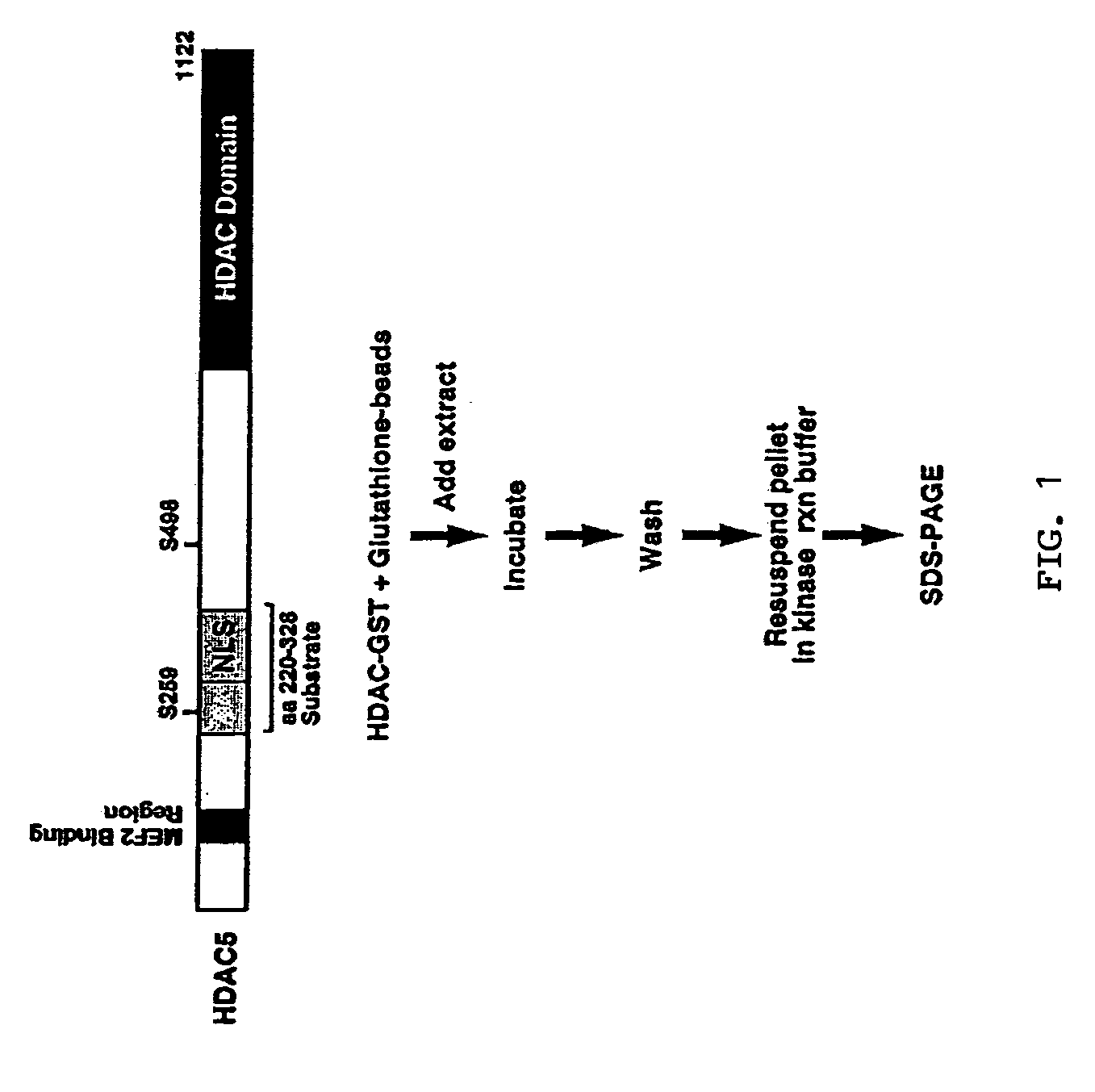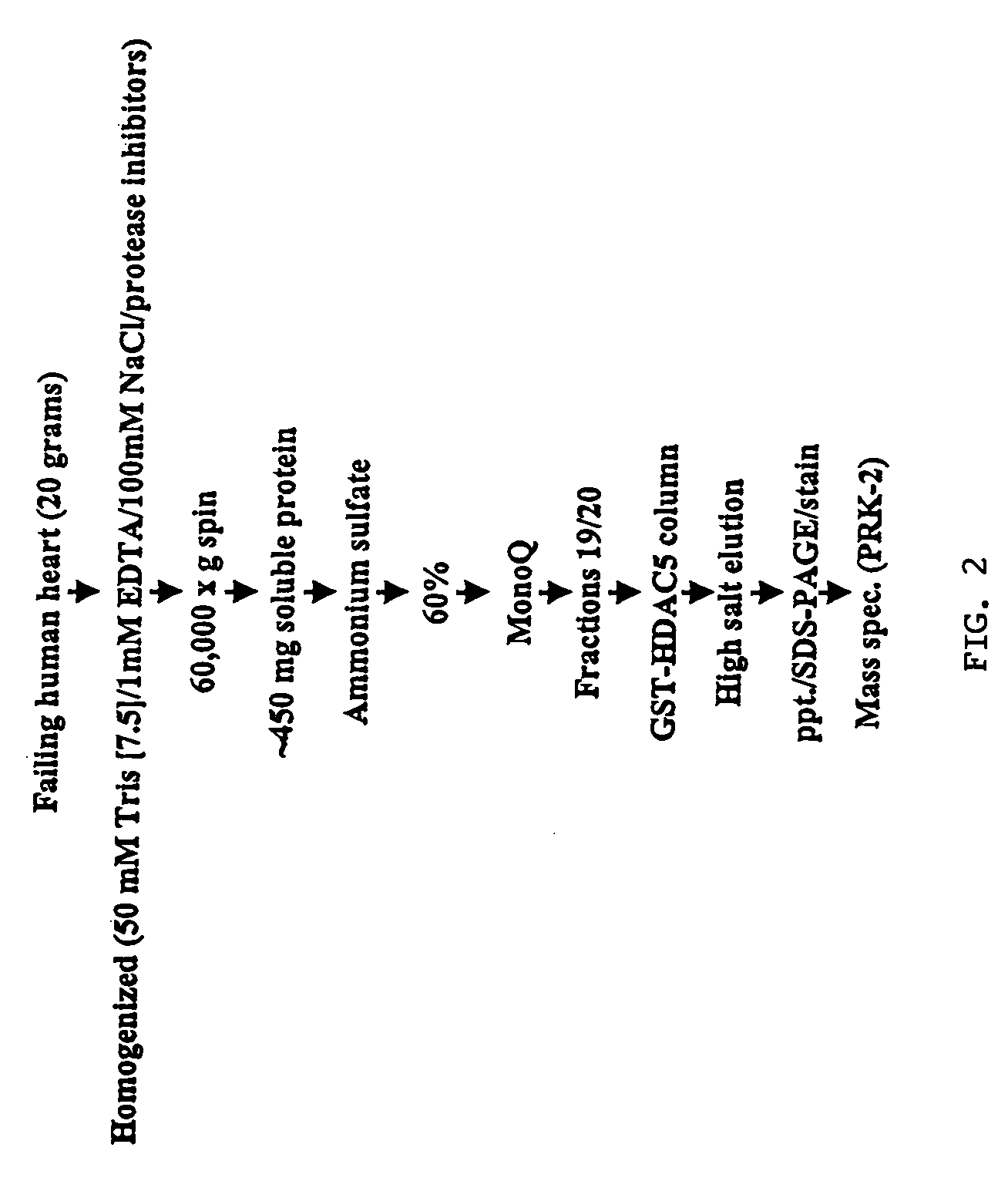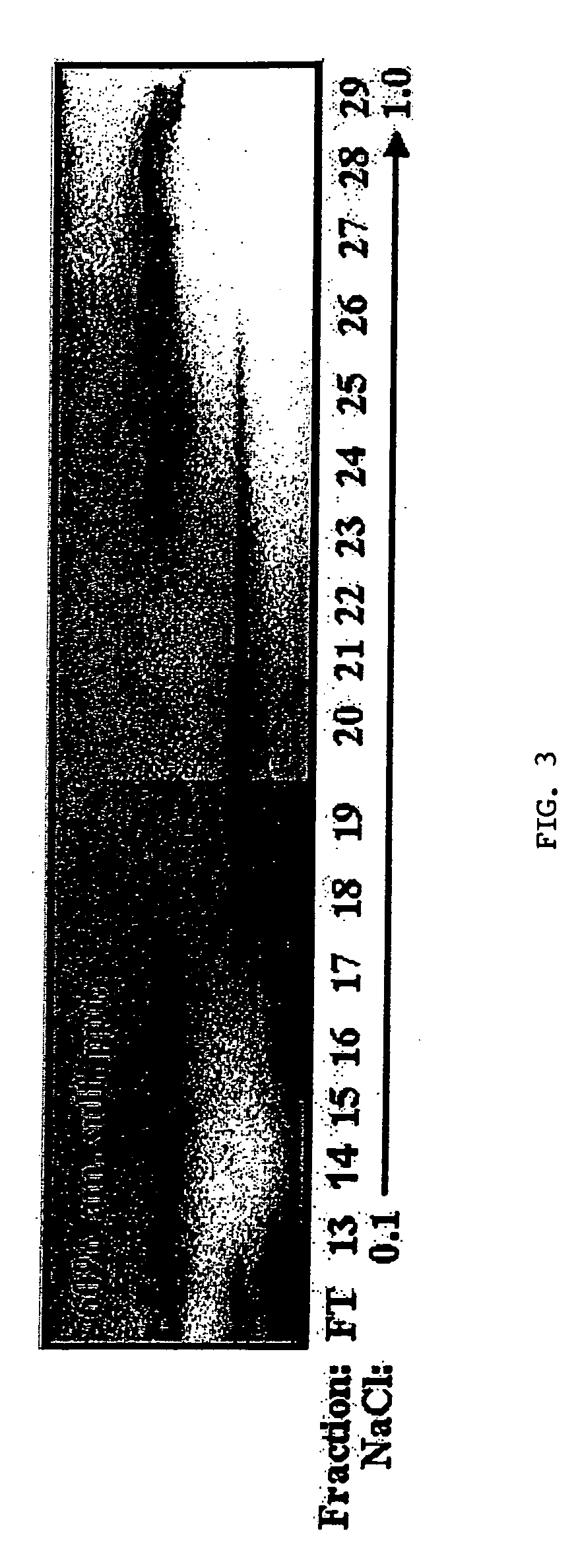Inhibition of protein kinase C-related kinase (PRK) as a treatment for cardiac hypertrophy and heart failure
a technology of protein kinase and c-related kinase, which is applied in the field of development biology and molecular biology, can solve the problems of cardiac hypertrophy, which is not fully understood, and achieve the effects of reducing the activity of prk in the heart cells, preventing cardiac hypertrophy, and increasing exercise toleran
- Summary
- Abstract
- Description
- Claims
- Application Information
AI Technical Summary
Benefits of technology
Problems solved by technology
Method used
Image
Examples
example 1
A. Example 1
Materials & Methods
[0338] Biochemical purification of HDAC5-associated proteins. Failing adult human heart samples (˜20 g total, left ventricle) were homogenized in Tris buffer (50 mM, pH 7.5) containing EDTA (1 mM), NaCl (100 mM), and protease inhibitors. Insoluble debris was pelleted by centrifugation. Soluble proteins were precipitated by sequential exposure to 20%, 40%, and 60% ammonium sulfate on ice for 20 minutes. After centrifugation, precipitated proteins were resuspended in homogenization buffer and assayed for HDAC5-directed kinase activity, as described below. Proteins present in the 40% and 60% ammonium sulfate precipitates were fractionated employing POROS anion exchange resin and a BioCAD perfusion chromatography workstation. Proteins were bound to the resin in Tris buffer (pH 7.5) containing 50 mM NaCl and eluted with an increasing linear gradient of NaCl. Fractions 19 / 20 (derived from 60% ammonium sulfate cut) were sequentially added to GST and GST-HDAC...
example 2
B. Example 2
Results
[0347] Class II HDACs have amino-terminal extensions containing two conserved serine residues that are phosphorylated in response to hypertrophic cues. Upon phosphorylation, these sites are bound by 14-3-3 chaperone proteins, which promote nuclear export of class II HDACs, resulting in activation of genes that would otherwise be suppressed by these transcriptional repressors.
[0348] Identification of PRK-2 as an HDAC5-associated kinase. Despite the inventors' understanding of the signal-dependent regulation of class II HDACs, the identity of the HDAC kinase(s) has remained elusive. Association of PRK-2 with HDAC5 has highlighted the importance of PRK as one of the elusive HDAC kinases. The inventors have previously demonstrated that an activity(s) from heart lysates physically associates with and phosphorylates a fusion protein containing glutathione s-transferase (GST) coupled to ˜100 amino acid of HDAC5, which harbors the amino-terminal 14-3-3 target site (FIG....
PUM
| Property | Measurement | Unit |
|---|---|---|
| pH | aaaaa | aaaaa |
| delay time | aaaaa | aaaaa |
| delay time | aaaaa | aaaaa |
Abstract
Description
Claims
Application Information
 Login to View More
Login to View More - R&D
- Intellectual Property
- Life Sciences
- Materials
- Tech Scout
- Unparalleled Data Quality
- Higher Quality Content
- 60% Fewer Hallucinations
Browse by: Latest US Patents, China's latest patents, Technical Efficacy Thesaurus, Application Domain, Technology Topic, Popular Technical Reports.
© 2025 PatSnap. All rights reserved.Legal|Privacy policy|Modern Slavery Act Transparency Statement|Sitemap|About US| Contact US: help@patsnap.com



